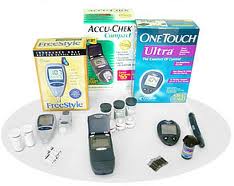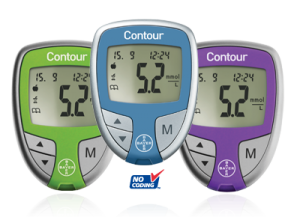Diabetes Testing Equipment

Diabetic testing equipment usually consists of a device usually referred to as a glucometer. Diabetic testing equipment is designed to read the level of glucose, or sugar, in a drop of blood so that the blood sugar level can be tracked.
The use of diabetic testing equipment is pretty simple and straight forward. To use the machine a special test strip is placed in the machine, then a drop of blood is collected by pricking the skin (usually on the finger) with a lancet, the drop of blood is placed on the test strip and the machine “reads” the amount of sugar (glucose) in the blood. Though there is a huge variety of different makes and models of diabetic testing equipment on the market, they all work in virtually the same way, some may require a little smaller drop of blood and some may “read” the sugar level quicker than the others, but the basic principal remains the same.
Diabetes testing equipment has become quite common since one of the chief concerns in the proper management of diabetes is to keep blood sugar levels as close to normal as possible. With the use of the glucometer the diabetic patient can check their blood sugar quickly, and almost painlessly in the convenience of their own home. The ease of use of the diabetes testing equipment makes it possible for the blood sugar to be tested many times per day so that the blood sugar levels can be manipulated via dietary changes or medication administration.
The key to the proper treatment of diabetes lies in the ability to keep blood sugar levels as close to normal as possible. While insulin and other medications and dietary changes can be used to manipulate blood sugar levels, without the humble diabetes testing equipment this would be an impossible task.



